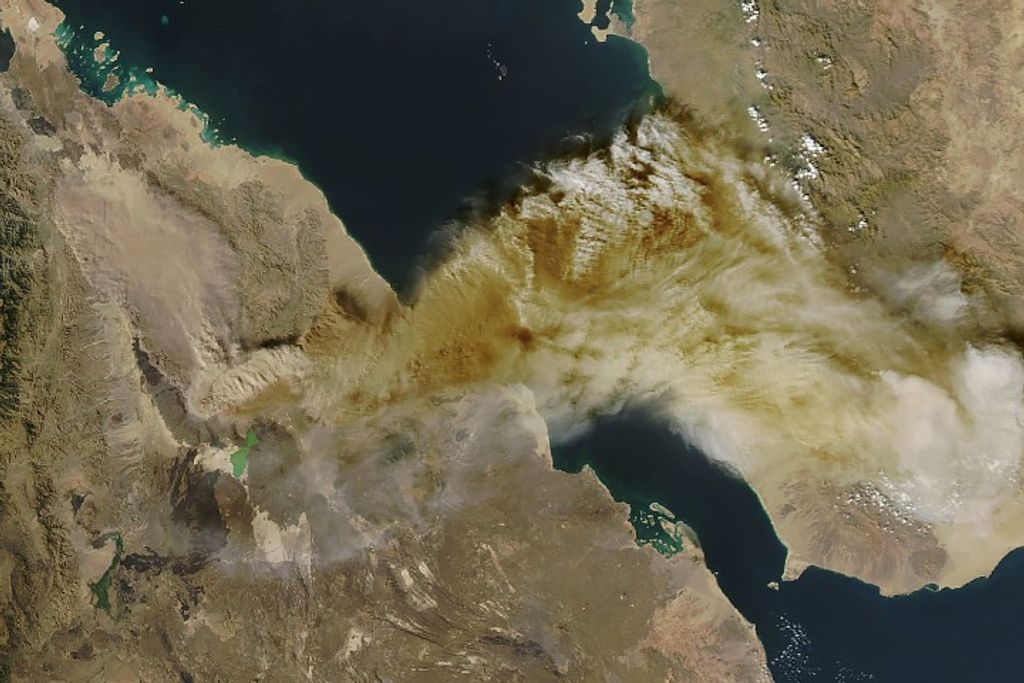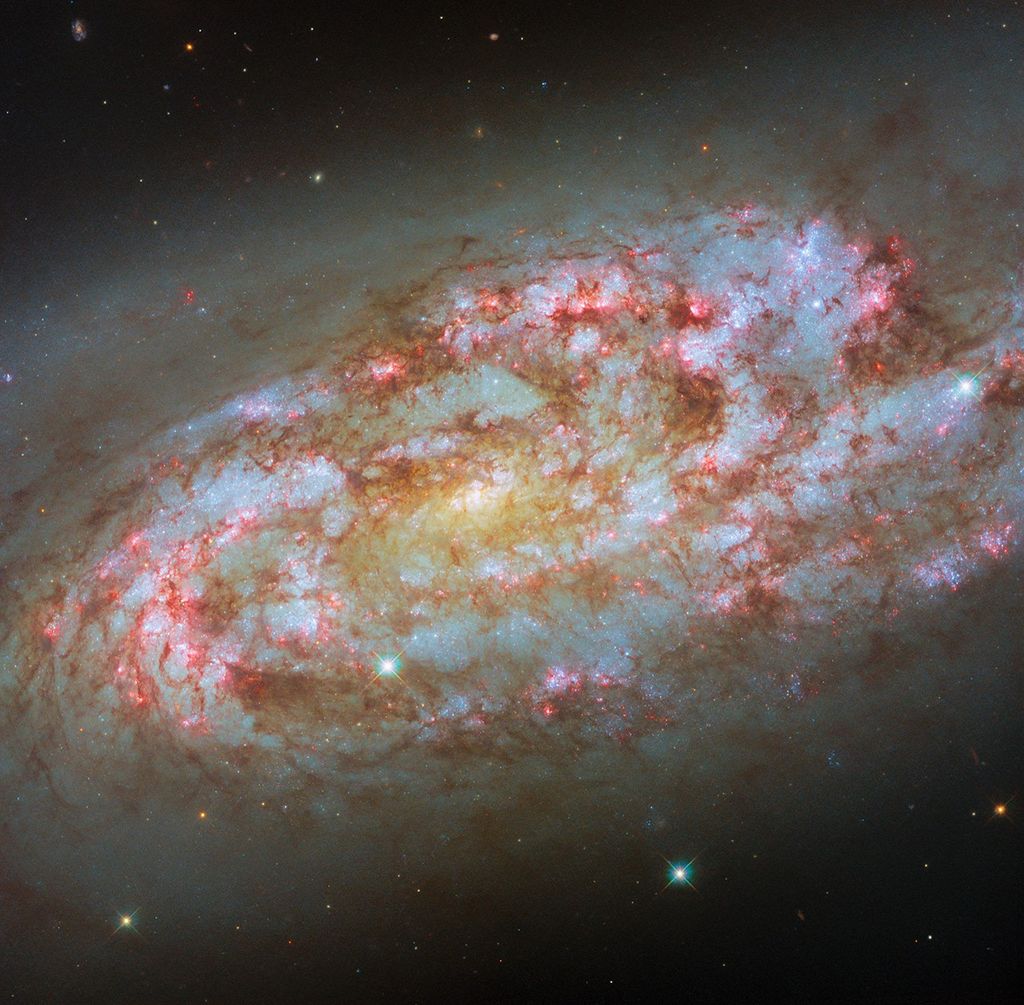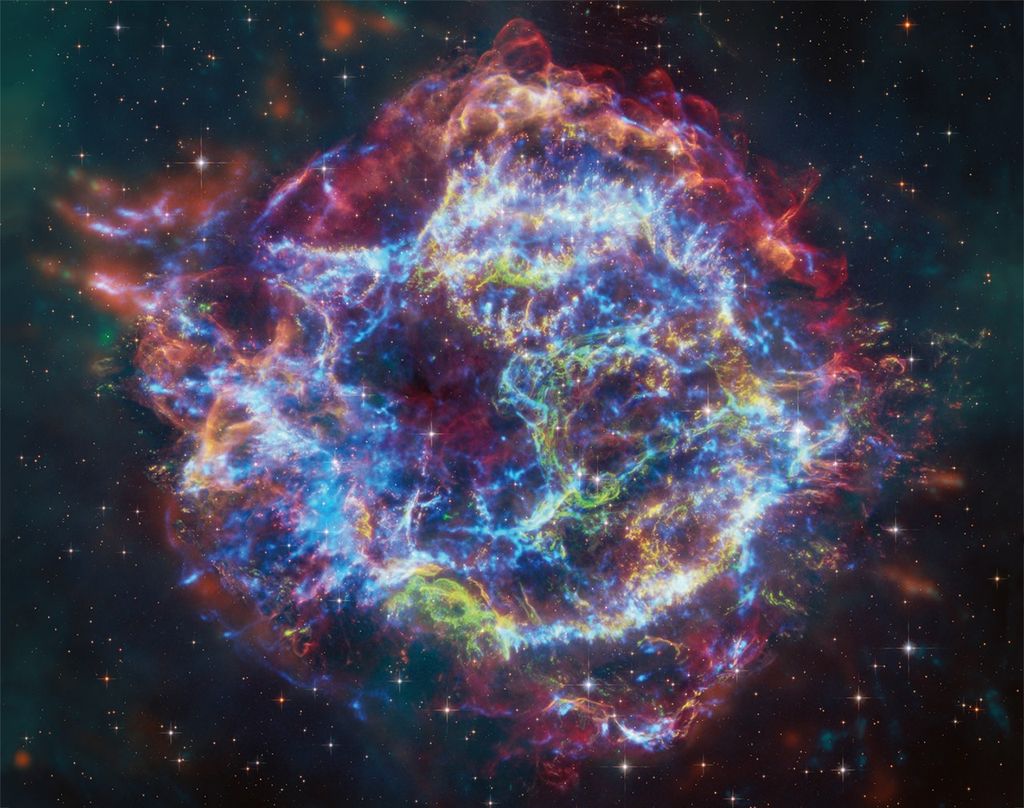1 min read
Cosmic Evolution Survey – Visible (Baryonic) Matter

About the Object
- R.A. PositionR.A. PositionRight ascension – analogous to longitude – is one component of an object's position.10h 0m 28.6s
- Dec. PositionDec. PositionDeclination – analogous to latitude – is one component of an object's position.02° 12' 21.0"
- ConstellationConstellationOne of 88 recognized regions of the celestial sphere in which the object appears.Sextans
About the Data
- Data DescriptionData DescriptionProposal: A description of the observations, their scientific justification, and the links to the data available in the science archive.
Science Team: The astronomers who planned the observations and analyzed the data. "PI" refers to the Principal Investigator. - InstrumentInstrumentThe science instrument used to produce the data.HST>ACS/WFC, Subaru>Suprime-Cam, VLT>VIMOS, and XMM/Newton>EPIC
- Object NameObject NameA name or catalog number that astronomers use to identify an astronomical object.Cosmological Evolution Survey Field, COSMOS Field
- Object DescriptionObject DescriptionThe type of astronomical object.Visible Matter Distribution Map, Astronomical Survey
- Release DateJanuary 7, 2007
- Science ReleaseHubble Maps the Cosmic Web of “Clumpy” Dark Matter in 3-D
- Credit
Related Images & Videos
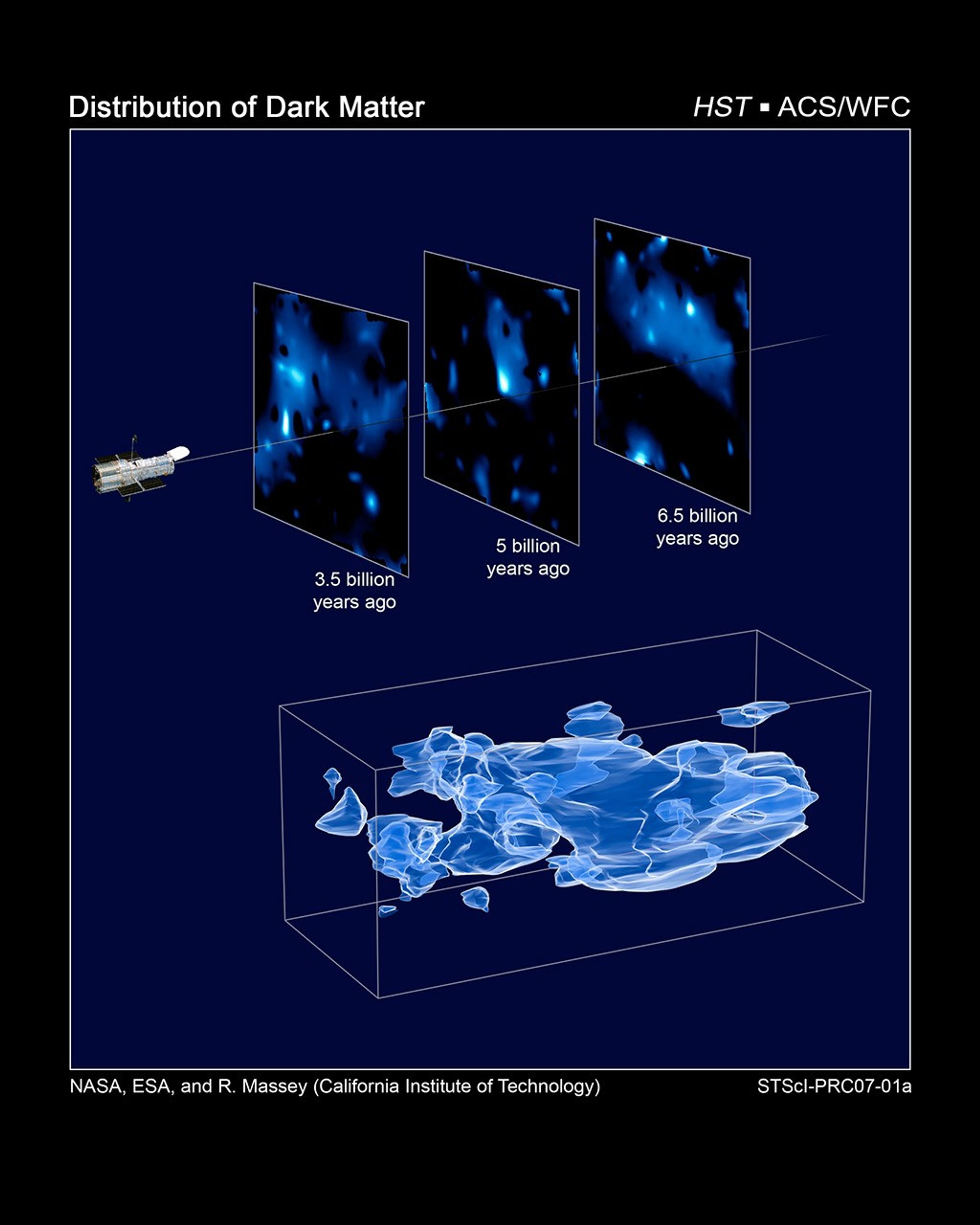
Three-Dimensional Distribution of Dark Matter in the Universe (with 3 slices of time)
This three-dimensional map offers a first look at the web-like large-scale distribution of dark matter, an invisible form of matter that accounts for most of the universe's mass. This milestone takes astronomers from inference to direct observation of dark matter's influence in...
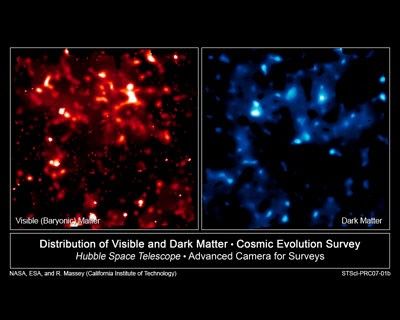
Comparison of Normal Matter and Dark Matter's Large Scale Structure
These two false-color images compare the distribution of normal matter (red, left) with dark matter (blue, right) in the universe. The brightness of clumps corresponds to the density of mass. The map covers an area of sky nine times the angular diameter of the full Moon, and is...

COSMOS Field Compared to Other Hubble Surveys
Hubble Space Telescope has a narrow field of view, which is only a fraction of the angular diameter of the Moon. Certain research programs have devoted a substantial amount of Hubble observing time to survey comparatively larger areas of sky to address a wide range of galaxy...

Full Resolution Image Single HST ACS COSMOS Tile
This image covers one of 49 COSMOS tiles. It is created from ACS infrared data as well as Subaru broadband data. This tile is roughly 10 arcminutes in size. It is one-third of the full resolution COSMOS tiles. The Subaru image is courtesy of P. Capak and R. Massey (Caltech).
Share
Details
Claire Andreoli
NASA’s Goddard Space Flight Center
Greenbelt, Maryland
claire.andreoli@nasa.gov









